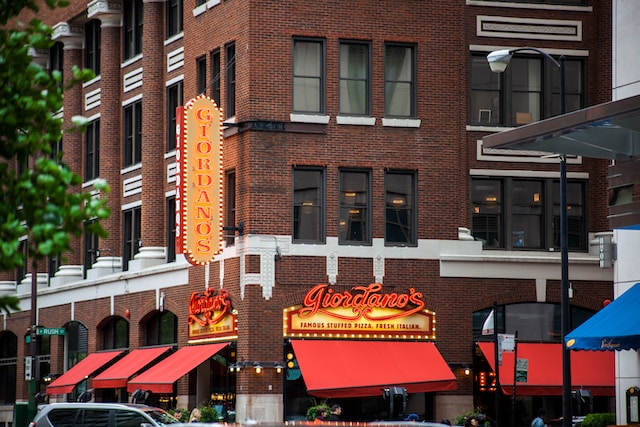Social media has transformed the way we interact with the world around us, and few platforms have had a more significant impact than Instagram. In particular, the rise of food influencers has drastically altered the restaurant scene, with their mouth-watering photos and engaging content driving trends and shaping consumer behavior. In this article, we’ll explore the connection between food, Instagram, and influencers, and how they’ve collectively changed the restaurant industry.
The Connection Between Food, Instagram, and Influencers
Why Food is Perfect for Instagram
Instagram is a visually driven platform, which makes food an ideal subject. Beautifully presented dishes, vibrant colors, and tantalizing textures all contribute to the platform’s appetite for food-related content. The platform’s nature encourages users to share their experiences, and as a result, food has become an integral part of Instagram culture. In the quest for attention, some users might even consider using services to buy 30 likes or more to boost their posts’ visibility, highlighting the impact of social media on our perception of food and dining experiences.
How Influencers Took Over the Food Scene
As Instagram grew in popularity, so too did the presence of influencers. These individuals have amassed large followings due to their engaging content, captivating personalities, and expertise in their chosen niches. In the food world, these influencers have become trusted sources of recommendations, reviews, and inspiration for food enthusiasts and casual diners alike.
Instagram’s Impact on the Restaurant Industry
Restaurant Marketing Strategies
Instagram has changed the way restaurants market themselves. Traditional advertising methods, such as print ads and radio spots, have taken a backseat to influencer partnerships and social media campaigns. Restaurants now collaborate with food influencers to create sponsored content, host events, and offer exclusive discounts to their followers, leading to increased engagement and customer loyalty.
Menu Design and Aesthetic
In the age of Instagram, presentation is more important than ever. Restaurants are paying closer attention to the visual appeal of their dishes, as well-crafted food images can generate significant buzz and attract new patrons. Chefs are experimenting with innovative plating techniques, vibrant ingredients, and artistic garnishes to create dishes that are as photogenic as they are delicious.
The Importance of Instagrammable Locations
An “Instagrammable” location is now a must-have for many restaurants. From elaborate murals to unique lighting installations, restaurants are investing in their interior design to create spaces that are not only functional but also highly photogenic. The goal is to provide customers with a memorable experience that they’ll want to share on social media, ultimately driving more traffic to the restaurant.
The Benefits of Food Influencers for Restaurants
Increased Visibility and Reach
Food influencers can significantly increase a restaurant’s visibility, as their posts are seen by thousands or even millions of followers. This exposure can be invaluable, especially for smaller establishments that may struggle to get noticed in a crowded market. By partnering with influencers, restaurants can reach new audiences and potentially convert followers into customers.
Targeted Marketing
Working with food influencers allows restaurants to tap into specific demographics and interests. For example, a vegan restaurant might collaborate with a well-known vegan influencer to reach a highly engaged audience that’s more likely to visit their establishment. This targeted marketing approach can be more effective and cost-efficient compared to traditional advertising methods.
Establishing Brand Identity
Food influencers can help restaurants establish a distinct brand identity by associating themselves with specific values, aesthetics, or cuisines. By consistently sharing content that aligns with a restaurant’s brand, influencers can reinforce the establishment’s unique selling points and create a loyal following.
Challenges Faced by Restaurants and Food Influencers
Balancing Authenticity and Promotion
One of the most significant challenges for both restaurants and food influencers is maintaining authenticity while promoting products or services. Influencers need to ensure that their sponsored content remains genuine and true to their personal brand to maintain their audience’s trust. At the same time, restaurants must ensure that their partnerships with influencers reflect their values and don’t compromise their reputation.
Dealing with Negative Reviews
Negative reviews can be a double-edged sword for restaurants and food influencers. On one hand, they can provide valuable feedback and drive improvement. On the other hand, they can damage a restaurant’s reputation or an influencer’s credibility. Both parties must be prepared to handle negative reviews gracefully and learn from the feedback they receive.
The Future of Food Influencers and the Restaurant Scene
The rise of food influencers has undoubtedly changed the restaurant scene, and it’s likely that their influence will continue to grow. As social media platforms evolve, food influencers will need to adapt and innovate to remain relevant. Meanwhile, restaurants will need to find new ways to engage with their audience and leverage the power of influencers to stay ahead of the competition.
Food influencers and Instagram have had a profound impact on the restaurant industry, shaping marketing strategies, menu design, and even the physical spaces in which we dine. By embracing the opportunities presented by these social media tastemakers, restaurants can increase their visibility, reach new audiences, and create lasting impressions that keep customers coming back for more.
